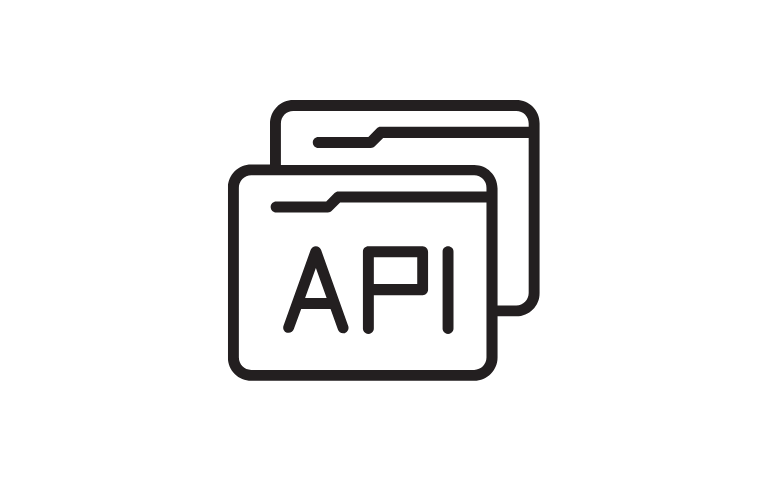One of the most popular PHP frameworks, Laravel, has continuously given programmers the resources they need to create reliable online applications quickly. Modern online and mobile apps can benefit from the smooth connection between clients and servers made possible by building RESTful APIs with Laravel. This tutorial will show you how to create a RESTful API using Laravel step-by-step, making sure your API is safe, useful, and easy for developers to use.
Table of Contents
What is a RESTful API?
RESTful API, short for Representational State Transfer API, is a standard architecture style that uses HTTP methods like GET, POST, PUT, and DELETE to interact with resources. These APIs are stateless, ensuring scalability and flexibility, and are widely used for web and mobile app backends.
Why Use Laravel for RESTful APIs?
Laravel is a developer-friendly framework that simplifies API development with features like:
- Eloquent ORM: A robust database management system.
- Laravel Sanctum: Built-in API authentication.
- Artisan CLI: Streamlined command-line tool for generating resources.
- Middleware: For secure request handling.
Step-by-Step Guide to Building RESTful APIs with Laravel
1. Setting Up Laravel
Start by installing Laravel:
composer create-project laravel/laravel laravel-api
cd laravel-apiThis creates a fresh Laravel project. Ensure you’ve set up your .env file to configure your database connection.
.env:
DB_CONNECTION=mysql
DB_HOST=127.0.0.1
DB_PORT=3306
DB_DATABASE=your_database_name
DB_USERNAME=your_username
DB_PASSWORD=your_password2. Planning the API Structure
Define the functionality of your API. For a book management system, the endpoints might look like this:
- GET /api/books — Retrieve all books.
- GET /api/books/{id} — Retrieve a specific book.
- POST /api/books — Create a new book.
- PUT /api/books/{id} — Update a book.
- DELETE /api/books/{id} — Delete a book.
3. Creating Database Migrations and Models
Create a migration for the books table:
php artisan make:migration create_books_tableDefine the schema in the migration file:
Schema::create('books', function (Blueprint $table) {
$table->id();
$table->string('title');
$table->string('author');
$table->text('description');
$table->timestamps();
});Run the migration:
php artisan migrateNext, create a Book model:
php artisan make:model Book4. Building API Routes and Controllers
Create an API controller:
php artisan make:controller BookController --apiDefine the routes in routes/api.php:
If you are using the latest laravel so run this command to create api.php file.
php artisan install:apiuse App\Http\Controllers\BookController;
Route::apiResource('books', BookController::class);This single line generates all necessary CRUD routes.
5. Implementing Authentication with Laravel Sanctum
Install Sanctum for secure API authentication:
composer require laravel/sanctum
php artisan vendor:publish --provider="Laravel\Sanctum\SanctumServiceProvider"
php artisan migrateUpdate the User model:
use Laravel\Sanctum\HasApiTokens;
class User extends Authenticatable
{
use HasApiTokens, HasFactory, Notifiable;
}Add authentication routes:
Route::post('/register', [AuthController::class, 'register']);
Route::post('/login', [AuthController::class, 'login']);6. Adding Error Handling and Validation
Ensure requests are validated in your BookController:
public function store(Request $request)
{
$validatedData = $request->validate([
'title' => 'required|max:255',
'author' => 'required|max:255',
'description' => 'required',
]);
$book = Book::create($validatedData);
return response()->json($book, 201);
}Implement a custom exception handler for consistent error responses.
7. Testing Your API
Testing is vital to ensure reliability. Create a test file:
php artisan make:test BookApiTestWrite a test for retrieving all books:
public function test_can_get_all_books()
{
$response = $this->getJson('/api/books');
$response->assertStatus(200);
$response->assertJsonStructure([
'*' => ['id', 'title', 'author', 'description']
]);
}Run the tests:
php artisan testAdditional Enhancements
- Pagination: Add paginated responses for large datasets.
- API Versioning: Support multiple versions of your API.
- Caching: Implement caching for faster responses.
Popular Laravel API Packages
When building RESTful APIs with Laravel, several powerful packages can streamline the development process, enhance functionality, and improve performance. Here are some of the most popular Laravel API packages:
1. Laravel Sanctum
Purpose: Lightweight API token authentication and SPA authentication.
Features:
- Provides a simple way to issue API tokens.
- Supports session-based authentication for SPAs (Single Page Applications).
- Ideal for applications needing minimal complexity.
2. Laravel Passport
Purpose: Full OAuth2 server implementation.
Features:
- Suitable for applications requiring advanced authentication, like multiple clients or third-party integrations.
- Provides tools to manage OAuth2 clients and access tokens.
3. Fractal (League/Fractal)
Purpose: Data transformation and serialization.
Features:
- Easily transform and format data for API responses.
- Supports JSON-API standards and complex data relationships.
- Works seamlessly with Laravel.
4. Spatie Laravel Query Builder
Purpose: Simplifies complex query building for APIs.
Features:
- Allows filtering, sorting, including relationships, and pagination of Eloquent models.
- Easily integrates into existing Laravel APIs.
5. Laravel API Response Helper
Purpose: Standardized API responses.
Features:
- Simplifies JSON responses with consistent formatting.
- Reduces boilerplate code for success and error responses.
6. Dingo API
Purpose: Comprehensive API toolkit.
Features:
- API versioning, error handling, and rate limiting.
- Built-in authentication and transformers.
- Offers middleware for additional API functionalities.
7. Laravel Telescope
Purpose: Debugging and monitoring APIs.
Features:
- Real-time monitoring of requests, exceptions, database queries, and more.
- Provides insights into the behavior of your API endpoints.
Conclusion
When you use Laravel’s strong features and tools, creating RESTful APIs is a simple process. Laravel gives you the tools you need to create scalable and maintainable APIs quickly, from specifying database schemas to putting secure authentication in place.
Although this approach offers a starting point for developing APIs, the options are virtually limitless. Explore more in-depth subjects including performance optimization, complex relationships, and API rate restriction.
Happy coding! 🚀




